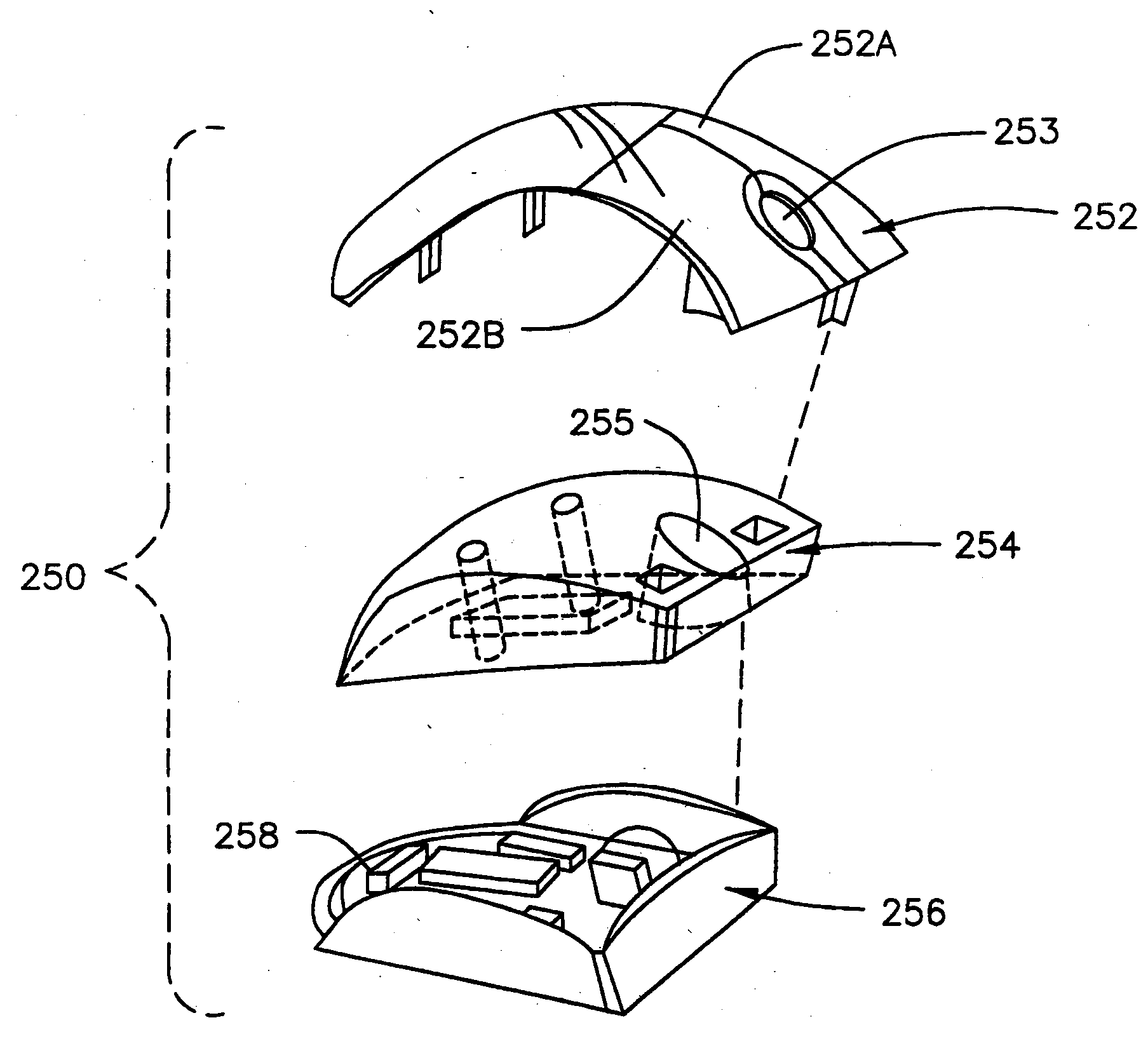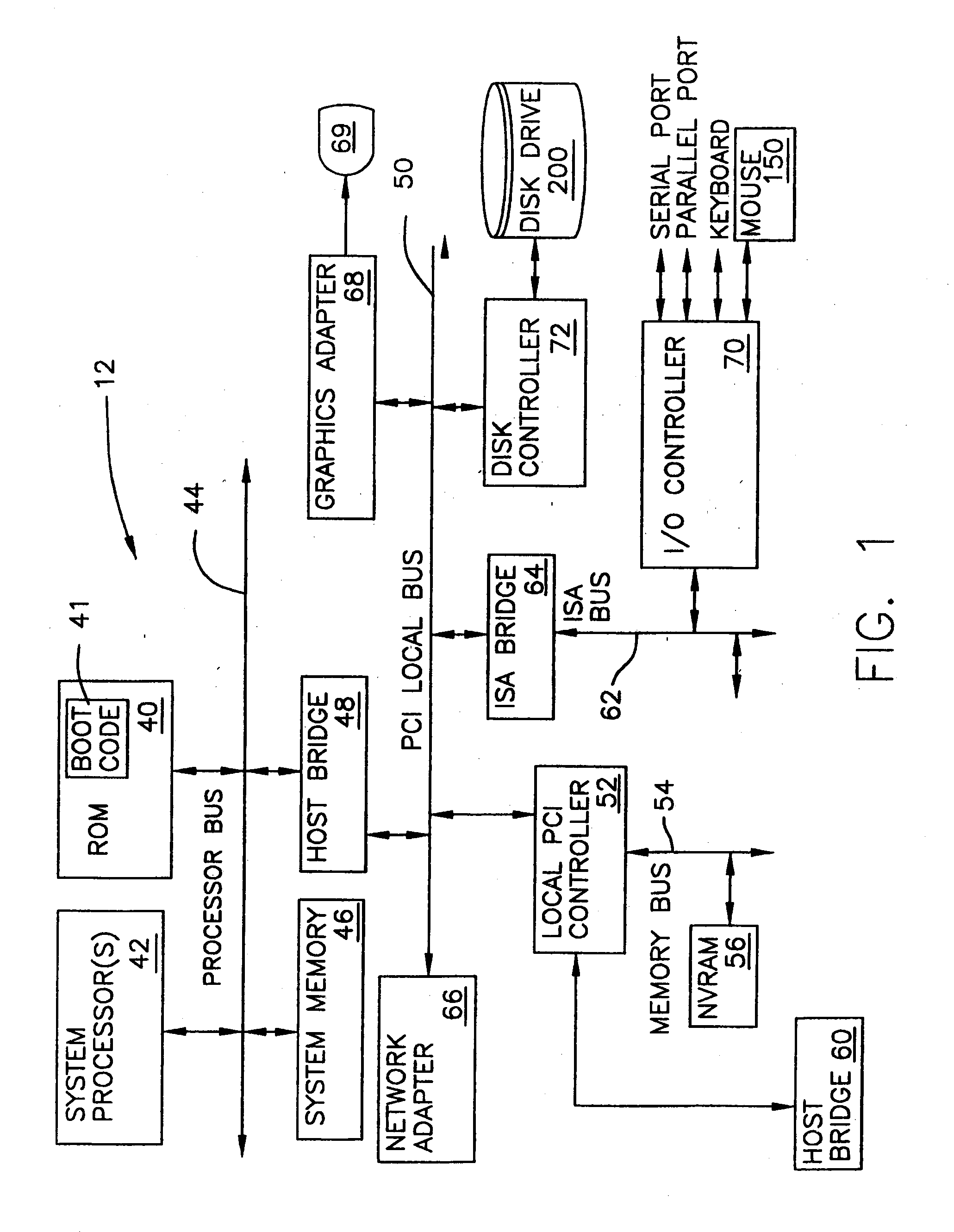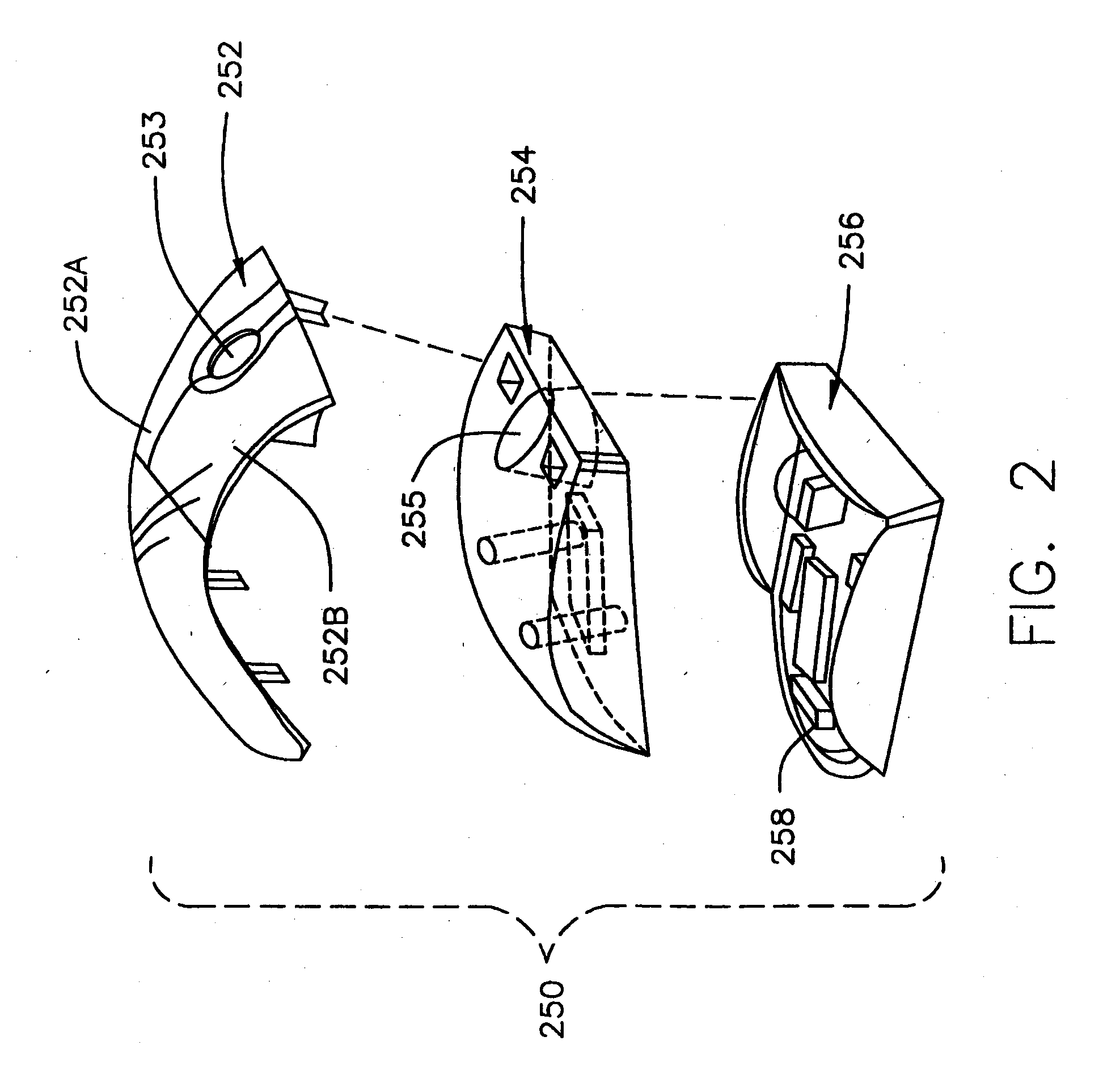Noise attenuation in and for computer mice
a mouse and noise attenuation technology, applied in the field of mouse noise attenuation, can solve the problems of user errors, unable to retain the tactile feel of the leaf-style switch, and other problems, to achieve the effect of reducing the free volume of space, facilitating mouse button actuation, and dampening clicking nois
- Summary
- Abstract
- Description
- Claims
- Application Information
AI Technical Summary
Benefits of technology
Problems solved by technology
Method used
Image
Examples
case 256
[0026]Lower case 256, for its part, will typically include a PCB (printed circuit board) 258 that is configured for managing or controlling a wide variety of mouse functions.
[0027]In accordance with a preferred embodiment of the present invention, a noise-attenuating insert 254 is preferably provided to be disposed within the hollow cavity defined between upper case 252 and lower case 256. Preferably, insert 254 will assume a shape that is sufficient to occupy a significant portion of the interior hollow space (i.e., cavity) of the mouse 250 without interfering with or impinging upon other key components of the mouse. Thus, preferably, recesses and apertures and / or other depressions or spaces may be “sculpted” into (i.e., defined in) the body of insert 254 to permit any and all moving parts of mouse 250 (that define any path of movement within the cavity between upper and lower cases 252 / 256) to move freely and uninhibitedly and to avoid encroaching upon sensitive components such as...
PUM
 Login to View More
Login to View More Abstract
Description
Claims
Application Information
 Login to View More
Login to View More - R&D
- Intellectual Property
- Life Sciences
- Materials
- Tech Scout
- Unparalleled Data Quality
- Higher Quality Content
- 60% Fewer Hallucinations
Browse by: Latest US Patents, China's latest patents, Technical Efficacy Thesaurus, Application Domain, Technology Topic, Popular Technical Reports.
© 2025 PatSnap. All rights reserved.Legal|Privacy policy|Modern Slavery Act Transparency Statement|Sitemap|About US| Contact US: help@patsnap.com



